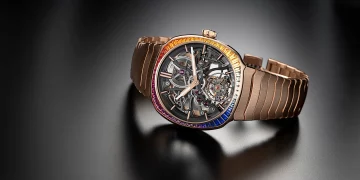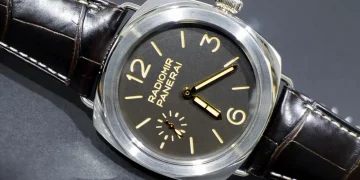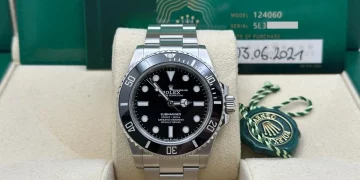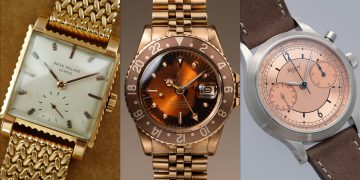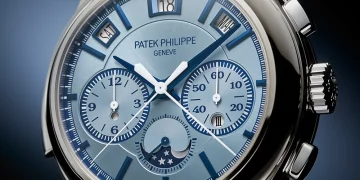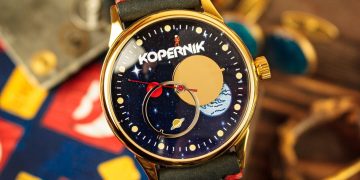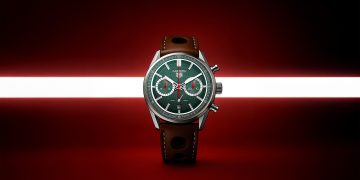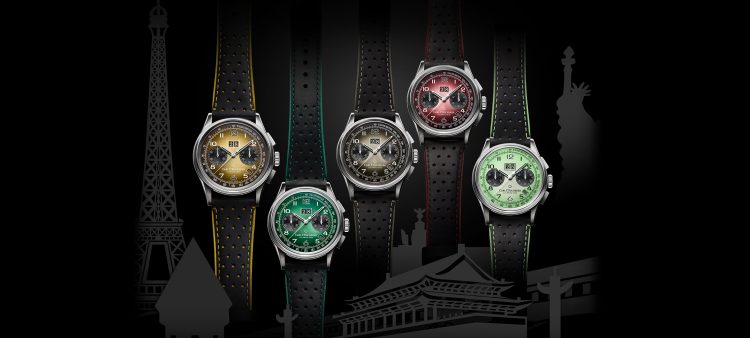Introduction
Over the past few decades, the watchmaking industry has experienced a significant transformation, largely driven by globalization. Traditionally, watchmaking was rooted in small, localized workshops that prioritized craftsmanship, heritage, and the artisanal touch. Famous brands like Rolex, Patek Philippe, and Audemars Piguet were built on a rich history of manual craftsmanship and attention to detail, creating timepieces that became symbols of luxury, quality, and exclusivity. However, the rise of globalization has introduced new challenges, opportunities, and influences to the world of horology.
As markets expanded beyond the traditional European strongholds into new regions such as Asia, the Middle East, and North America, watchmaking brands were faced with a diverse range of consumer tastes, technological innovations, and competitive pressures. In response, many of these brands have had to adapt and evolve their design philosophies to cater to the increasingly globalized market while maintaining their roots in craftsmanship and tradition.
This article seeks to explore how globalization has shaped the design thinking of traditional watchmaking houses. We will look at how cultural influences, technological advancements, changing consumer behavior, and emerging market demands have altered the way luxury watches are conceived, designed, and marketed. From introducing new materials and functions to adapting aesthetic preferences, this transformation highlights the delicate balance between tradition and modernity that defines contemporary luxury watchmaking.
1. The Rise of Globalization in the Watchmaking Industry
1.1 What is Globalization in the Context of Watchmaking?
Globalization refers to the increasing interconnectedness of the world’s economies, cultures, and societies, facilitated by trade, technology, and the global movement of capital and information. In the context of watchmaking, globalization has led to the expansion of markets, exposure to new consumer preferences, and the integration of international design aesthetics.
- Expansion into Emerging Markets: Brands like Rolex and Omega have successfully penetrated markets in Asia, especially China and Japan, where the demand for luxury watches has skyrocketed. These markets have introduced new challenges for traditional Swiss watchmakers, requiring them to understand different cultural preferences, local tastes, and regional design sensibilities.
- Global Supply Chains and Production: The rise of global supply chains has also had a profound impact on how watches are produced. Swiss brands now source materials and components from various regions around the world, allowing them to enhance the quality and variety of their offerings while cutting production costs.
1.2 The Impact of Globalization on Watchmaking Brands
The influence of globalization on traditional watch brands has not only been limited to market expansion but has also affected brand strategies, design philosophies, and communication methods.
- Increased Competition: With the globalization of luxury markets, the number of competitors in the watchmaking industry has increased significantly. Swiss brands now compete with established players from countries like Japan (e.g., Grand Seiko) and newer entrants from China and other parts of Asia.
- Cultural Exchange in Design: As watchmaking brands began catering to diverse markets, they started incorporating different cultural aesthetics, colors, and design elements. For example, brands like Jaeger-LeCoultre and Audemars Piguet began offering watches with elements that appealed to tastes in the Middle East, where larger cases, gold finishes, and intricate designs are highly popular.
2. Adapting to Consumer Preferences in a Globalized Market
2.1 The Shift in Consumer Demographics
Globalization has led to an explosion in the number of luxury watch consumers, with a growing number of younger buyers entering the market. Brands have had to adjust their design philosophies to appeal to both the traditional clientele and a new generation of watch enthusiasts.
- Young Consumers and Digital Influence: Millennial and Gen Z buyers, who are more digitally connected and socially conscious, often prioritize functionality, sustainability, and brand storytelling in their purchasing decisions. As a result, traditional brands are now placing more emphasis on creating timepieces that combine classic design elements with modern technology, such as smartwatches or hybrid watches that combine traditional mechanical movements with smart features.
- Cultural Sensitivity and Inclusivity: The global market has introduced a need for inclusivity in design. Watchmakers now take into account regional sensitivities and preferences, such as designing pieces with specific symbolism for different cultures, like incorporating numerals or motifs significant to certain regions (e.g., Arabic numerals for the Middle East or Chinese motifs for Chinese consumers).
2.2 Changing Design Priorities and Aesthetic Shifts
One of the most visible impacts of globalization on traditional watchmaking is the evolution of design aesthetics. The once uniform design language of Swiss-made watches has diversified as brands have adapted to the tastes of global consumers.
- Size and Case Design: Watch sizes have fluctuated in response to changing fashion trends. In many Asian markets, smaller and more delicate timepieces have remained popular, while larger, bold designs are sought after in Western markets.
- Materials and Finishes: The choice of materials has expanded with globalization. While traditional metals like gold, stainless steel, and platinum continue to dominate, new materials such as titanium, ceramic, and carbon fiber have gained popularity, especially in the context of sports and adventure watches.
- Color and Dial Design: While classic color palettes (black, white, silver) still dominate the luxury watch world, the global market’s demand for more playful, expressive designs has prompted brands to experiment with bolder dial colors, textures, and finishes.
3. Technological Advancements and Innovation in Watchmaking
3.1 The Role of Technology in Traditional Watchmaking
With the rise of globalization, technological advancements have become critical in staying competitive within the watch industry. Modern technologies allow brands to offer more precise, durable, and innovative timepieces that cater to both traditionalists and new-age consumers.
- Computer-Aided Design (CAD): The use of CAD software has allowed for more detailed and efficient designs, enabling brands to prototype and test new ideas before committing to full-scale production. This has led to greater accuracy in creating components that work seamlessly together.
- Hybrid Watches and Smartwatch Integration: As smartwatches become a dominant force in the global market, traditional watchmakers have embraced hybrid technology. Brands like TAG Heuer and Garmin have integrated smart features into their designs without compromising on the classic mechanical aspects that many luxury watch enthusiasts cherish.
3.2 Innovation in Materials
Globalization has not only brought an influx of cultural influences but also the opportunity to innovate with materials from all corners of the world. New materials are being used to create more durable, lightweight, and unique timepieces that appeal to a global consumer base.
- Silicon Components: Silicon’s use in movements, especially in escapements and balance springs, has allowed for greater precision and resistance to magnetic fields, which has been a key innovation for global markets demanding more robust and reliable watches.
- Ceramic: Ceramic has gained traction due to its scratch-resistant nature and sleek, modern look. Brands like Omega and Rolex have used ceramic in their watch bezels and cases to cater to consumers who prioritize durability as well as aesthetics.
- Carbon Fiber and Lightweight Alloys: The growing demand for lighter, more durable watches has led to the use of carbon fiber and various alloys that offer enhanced performance in sports and dive watches, appealing to a global audience.

4. The Global Market and Watch Marketing Strategies
4.1 Luxury Branding in a Globalized World
The way watchmakers market their products has undergone significant changes due to globalization. Traditional branding techniques, often focused on heritage, craftsmanship, and exclusivity, have had to adapt to a broader, more diverse global audience.
- Digital Marketing and Social Media: Watchmakers have embraced digital platforms to reach younger, tech-savvy buyers. Social media, especially platforms like Instagram and YouTube, have become critical for connecting with the global audience and showcasing new collections.
- Celebrity Endorsements and Influencers: Collaborations with global celebrities and influencers have played a significant role in driving sales, particularly in markets like the U.S. and China. Brands like Omega and Audemars Piguet have leveraged these relationships to promote their timepieces worldwide.
4.2 Watchmaking’s Cultural Capital
As the watch industry has expanded globally, the importance of cultural capital has increased. Brands that were once primarily focused on European markets now have to account for the diverse cultural meanings and values associated with luxury in different parts of the world.
- Brand Storytelling: Luxury watch brands are focusing more on storytelling, emphasizing their heritage, craftsmanship, and values. This narrative approach is designed to appeal to a global audience that values authenticity and transparency.
- Cultural Relevance in Design: Some brands have begun creating limited-edition watches that resonate with specific cultural events or milestones. These watches not only cater to a specific market but also celebrate the diversity of global watch collectors.
5. Challenges and Opportunities in the Globalized Watch Industry
5.1 The Challenges of Globalization
- Maintaining Brand Heritage: As brands expand into new markets, there is a tension between maintaining the heritage and traditions that built the brand while adapting to the changing demands of global consumers.
- Sustainability and Ethical Sourcing: With the global demand for luxury goods increasing, consumers are becoming more conscious of sustainability and ethical sourcing. Watch brands are now challenged to meet these demands without compromising the quality of their products.
5.2 The Future of Watchmaking in a Globalized World
- Further Integration of Technology: The future will likely see even more integration between mechanical and smart technology, as well as advancements in materials that enhance both form and function.
- New Markets and Demographics: The younger demographic in emerging markets presents opportunities for growth. Watchmakers who can strike the right balance between tradition and innovation will continue to thrive.
Conclusion
Globalization has profoundly altered the landscape of traditional watchmaking, introducing both challenges and opportunities for established brands. While the core principles of Swiss craftsmanship, precision, and luxury remain unchanged, the way watches are designed, produced, and marketed has evolved to meet the demands of a more diverse and connected world. As the industry continues to embrace new technologies and materials, watchmakers must balance their rich heritage with the ever-changing preferences of global consumers. Ultimately, the ability to innovate while preserving traditional values will determine the future of luxury watchmaking in the globalized age.






